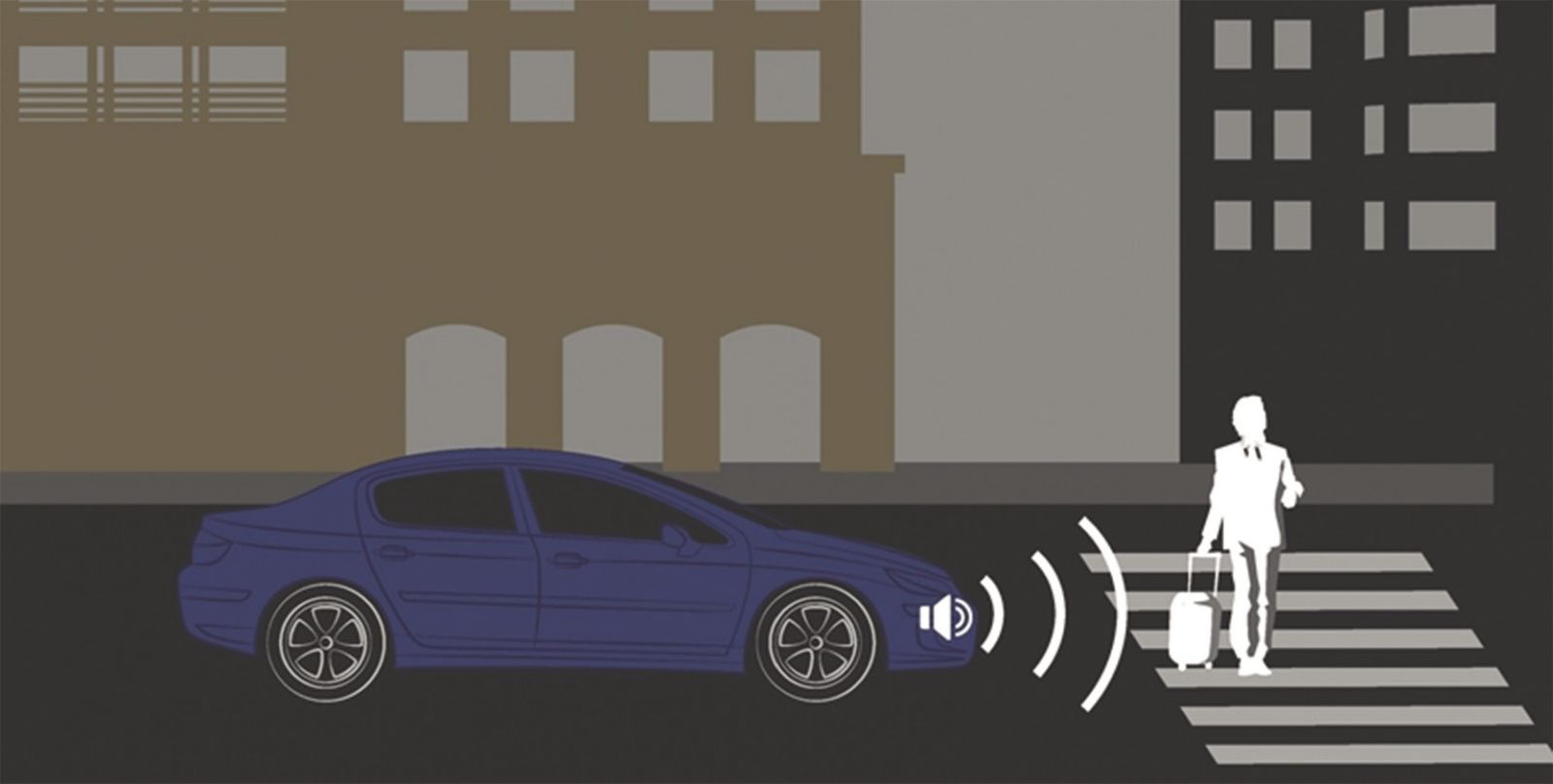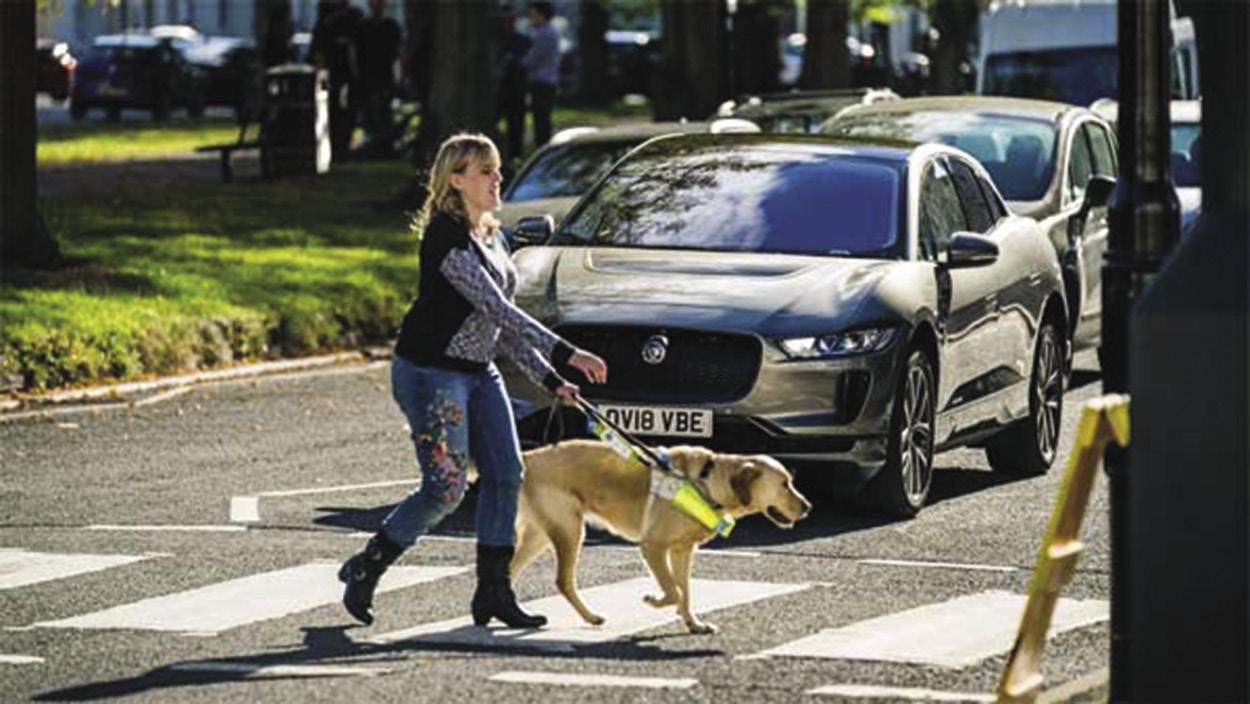AVAS stands for "acoustic vehicle alert system." It is a detectable warning signal for hybrid and electric cars to compensate for the negative effects linked to the fact that they are quiet. In 2019, AVAS will become mandatory in Europe on all new quiet cars and it will have to be installed by 2021 on those cars that are already on the market. AVAS is an artificial sound imitating the sound of a conventional engine so that quiet cars can be heard.
AVAS: IS IT USELESS, ANNOYING, REGRESSIVE?
There are those who object that you cannot expect from an owner of the most famous electric car in the world, Tesla, to ruin the pleasure of quiet smooth driving by adding an annoying and useless croak. Yes, because, according to them, AVAS is designed only for the 285 million blind people in the world, a small minority. Besides, blind people should not be able to cross streets by themselves, and should always be properly accompanied. In addition to being annoying, AVAS would be inopportune and the significant innovation of silent cars thwarted because of noise pollution.
 TECHNOLOGICAL EVOLUTION, INNOVATION, SECURITY
TECHNOLOGICAL EVOLUTION, INNOVATION, SECURITY
The arguments above are easily challengeable. In fact, it is commonly accepted that if technological evolution gives rise to significant situations regarding accessibility, usability and the cost of certain products, corrective measures must be found. The introduction of hybrid and electric cars will have a major impact on the transport market, but also on the daily lives of many people. It is not at all true that AVAS was designed for people living with vision loss, whom don't mean much for "no AVAS" proponents. In our society, traffic is a very complex system and we use multiple sources of information to know what is happening around us. Silent cars are not only dangerous for blind and visually impaired pedestrians, they are a problem when travelling at reduced speed even for the so-called "vulnerable" pedestrians, who, in order to navigate safely in traffic, depend on acoustic as well as visual cues. Children, older people, cyclists, joggers, not to mention the distracted compulsive users of smart phones can be threatened by silent cars because they cannot hear them coming. It is indeed difficult to notice a silent car approaching. Technological evolution and innovation must respect security. Numerous research led in the US, and in Europe as well, show that there are more accidents involving pedestrians and silent vehicles than conventional ones. The number of accidents grows faster than the number of silent cars. An average pedestrian hears a Toyota Prius approaching at a distance of only eight metres, too little for the average reaction time. The rules for making AVAS mandatory were set at the international level precisely because of the need to guarantee the safety of all road users. Therefore, AVAS is not a niche solution.
SAFETY AND INDEPENDENCE
Clearly, the idea that blind people must have the help of a companion to cross the road is totally illogical. Many blind and visually impaired people are used to crossing streets on zebra crossings or intersections with or without audible traffic lights. For them new silent cars create further risk, added to those caused by the "French" roundabouts or shared spaces, true war zones for pedestrians with disabilities or permanent or temporary functional limitations. In addition, the cost to equip a silent car with AVAS is around 100/150 €, a manageable fee as that of seat belts. Technological evolution and personal mobility courses have greatly improved the autonomy of blind and visually impaired people and this also affects the use of public transit. Technological evolution, to be innovative, must also result in a participatory and shared evolution for all users, not just those of class A.

It is a fact that in the absence of auditory feedback, blind and visually impaired persons cannot gain their bearings as well. This is why, when asked if they need AVAS, the answer is certainly affirmative. The idea according to which AVAS is annoying, producing noise pollution, reducing our quality of life is simply absurd. In fact, AVAS is nothing like ambulance sirens or transfer vehicles at airports. The signal, according to European legislation, must resemble the sound of a real car. In addition, AVAS is only activated at speeds below 20 km/h, then air movement and tire noise are normally audible by average pedestrians. From the inside of the car, the noise of AVAS is barely perceptible. There are also technical solutions to create a comfortable AVAS: rear transmitters for reverse, forward right or left depending on the direction of the car. Finally, the objection that AVAS would jeopardize the design of silent cars is not acceptable, because it is nonetheless a non-visible security factor. Airbags were introduced about forty years ago by Chrysler on its cars as an option. No one will be surprised that few customers bought them, to the point where Chrysler ceased production.
Today airbags are mandatory and no one doubts their usefulness. The promotional campaign of international organizations of blind and visually impaired people wants to make AVAS mandatory. Both in the United States and in Europe the use of AVAS is now indisputable, to the point that it is no longer possible to switch off AVAS at the discretion of the driver. Some technical issues still need to be resolved. The level of the signal currently set at 56 decibels seems to be low; the speed threshold below which AVAS is activated should probably be 30 km/h, as it is in the United States, and not 20 as it is in Europe. Finally, the way in which AVAS signals the speed of the approaching car must still be defined. However, these are technical details that can easily be solved.





.png)